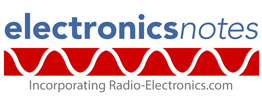Home » Component data » SiC MOSFET data » this page
NVH4L080N120SC1 SiC MOSFET Data
Data for the NVH4L080N120SC1 silicon carbide MOSFET including electrical parameters, maximum current and voltage, pin connections, package type and many other datasheet details.
The NVH4L080N120SC1 SiC MOSFET provides a typical ON resistance of only 80mΩ and a maximum operating voltage of 1200V and it is contained in a four lead TO247 package.
Key details and performance parameters for the NVH4L080N120SC1 SiC MOSFET.
| NVH4L080N120SC1 Silicon Carbide MOSFET datasheet parameters & data |
|
|---|---|
| Parameters | Details |
| Brief description | N-channel SiC MOSFET |
| Package type | TO247-4L |
| Operational mode | Enhancement |
| Channel type | N-channel |
| Drain to Source voltage VDSS | 1200V |
| Drain to gate voltage VDGR | |
| Gate to source voltage VGSmax | -15 / +25V |
| Maximum drain current continuous ID | 29A at VGS = 20V and 25°C 21A at VGS = 20V and 100°C |
| Maximum drain current pulsed ID | 125A |
| Zero gate voltage drain current IDSS | 100µA at 25°C, 1mA at 150°C |
| Gate threshold voltage VGS(th) | 1.8V min, 2.75V Typ, 4.3V max at VGS = VDS, ID = 5mA |
| Static drain source ON resistance RDS(ON) | 80mΩ typ, 100mΩ max at VGS = 20V and ID = 20A 127mΩ typ, 162mΩ max at VGS = 20V and ID = 20A at 150°C |
| Forward transconductance gFS | 11.3 typ for VDS = 20V and ID = 20A 9.8 typ for VDS = 20V and ID = 20A at 150°C |
| Input capacitance | 1112pF typ, 1670pF max |
| Output capacitance | 80pF typ, 120pF max |
| Reverse transfer capacitance | 6.5pF typ, 10pF max |
| TJ °C | 175 |
| PTOT mW | 170W at 25°C and 28W at 150°C |
| Primary manufacturer | On Semiconductor |
Outlines & pinout:
Explanation of SiC MOSFET parameters
| Parameter | Explanation |
|---|---|
| Operational mode | This details whether the FET is an enhancement or depletion mode |
| Channel type | The channel of the MOSFET can either be an N-type channel where electrons are the majority carriers or P-type where holes are the majority current carrier. |
| Drain to Source voltage VDSS | This is the maximum voltage that can be sustained between the drain and source |
| Gate to source voltage VGSS | This is the maximum voltage that can be sustained between the drain and the gate. |
| Maximum drain current continuous ID | This is the maximum current that can be carried byt he device. Sometimes there may be a differentiation between the continuous and pulsed or peak values |
| Parameter | Explanation |
|---|---|
| Zero gate voltage drain current IDSS | This is the current carried by the device when the gate voltage is zero. The test conditions are normally stated for this. |
| Gate threshold voltage VGS(th) | This is the minimum gate-to-source voltage, VGS required to create a conductive channel between the source and drain terminals |
| Static drain source ON resistance RDS(ON) | This is the resistance of the device when turned on. The test conditions of voltage and current are normally given for this. |
| Drain source ON voltage VDS(ON) | This is the voltage across the device when it is turned on. Again the test conditions are given. |
| Forward transconductance gFS | Forward transconductance also given the letters gm is defined as the change in drain current (ΔID) for a small change in the gate-source voltage ΔVGS, with the drain-source voltage, VDS held constant. |
These are the main SiC MOSFET parameters that have been included in our list. Being a form of MOSFET, they are basically the same as other FETs and MOSFETs.
Please note, that the data given is the best estimate we can give within a tabulated summary of this nature. Parameters also vary between manufacturers. Electronics Notes cannot accept any responsibility for errors, inaccuracies, etc, although we do endevaour to ensure the data is as accurate as possible.
Notes and supplementary information
• Availability & sources
The NVH4L080N120SC1 is available from a number of stockists and electronic component distributors many of which are given in the table below.
NVH4L080N120SC1 Component Distributor, Stock and Pricing
• Further details
In addition, the low ON resistance and compact chip size ensure low capacitance and gate charge. Consequently, system benefits include highest efficiency, faster operation frequency, increased power density, reduced EMI, and reduced system size.
 Written by Ian Poole .
Written by Ian Poole .
Experienced electronics engineer and author.
Return to Component Data menu . . .




